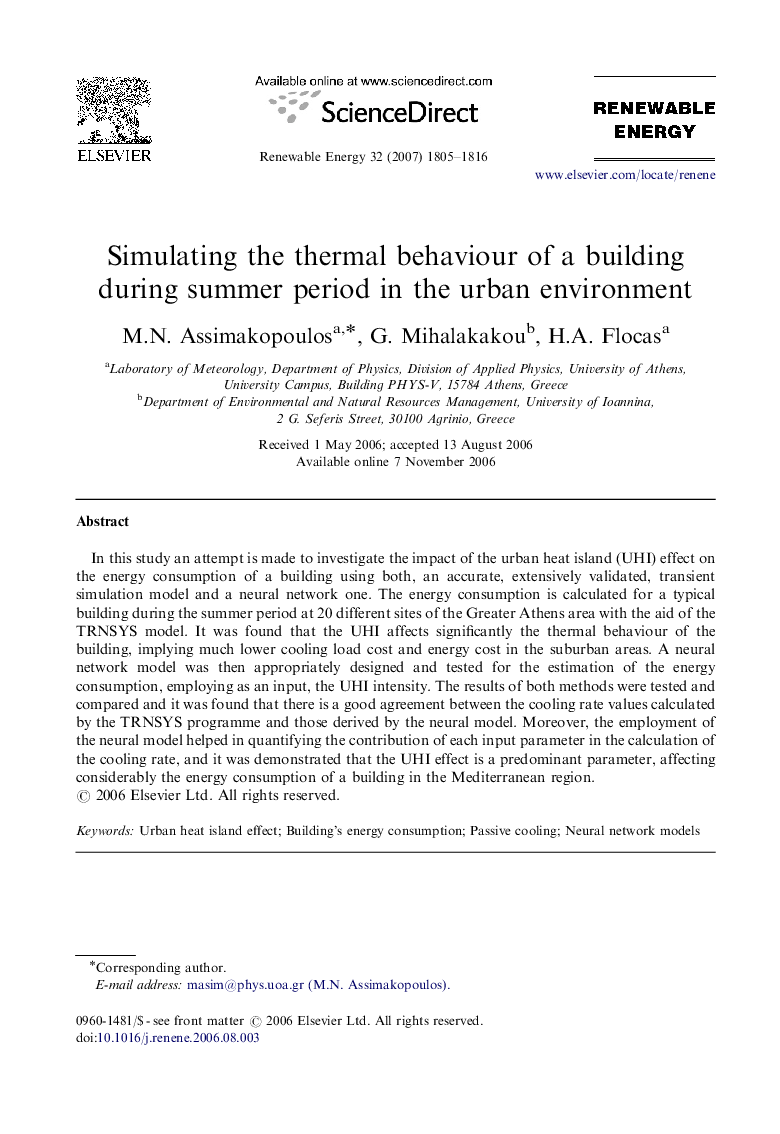| Article ID | Journal | Published Year | Pages | File Type |
|---|---|---|---|---|
| 302768 | Renewable Energy | 2007 | 12 Pages |
In this study an attempt is made to investigate the impact of the urban heat island (UHI) effect on the energy consumption of a building using both, an accurate, extensively validated, transient simulation model and a neural network one. The energy consumption is calculated for a typical building during the summer period at 20 different sites of the Greater Athens area with the aid of the TRNSYS model. It was found that the UHI affects significantly the thermal behaviour of the building, implying much lower cooling load cost and energy cost in the suburban areas. A neural network model was then appropriately designed and tested for the estimation of the energy consumption, employing as an input, the UHI intensity. The results of both methods were tested and compared and it was found that there is a good agreement between the cooling rate values calculated by the TRNSYS programme and those derived by the neural model. Moreover, the employment of the neural model helped in quantifying the contribution of each input parameter in the calculation of the cooling rate, and it was demonstrated that the UHI effect is a predominant parameter, affecting considerably the energy consumption of a building in the Mediterranean region.
